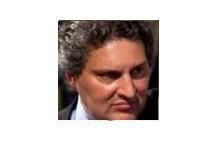
IFR Editor-at-large Keith Mullin
How wrong was I? I watched the entire sorry affair and it was the dullest, most pointless two hours I’ve spent in a long, long time. In the event, the Senate committee pussyfooted around a man they were clearly in awe of and proceeded to develop a weak and disinterested line of questioning and took everything Dimon said at face value.
If we got an ABC of any emotion from the committee of blasé, grandstanding blowhards, it was apathy, boredom and crass obsequiousness.
I’d resisted the temptation to mention previously that the committee is peppered with Senators for whom JP Morgan is a top political contributor, and who have aides who had lobbied on JPM’s behalf. But after viewing the sorry episode, it was clearly much more of an issue than I had thought. I wouldn’t have been surprised if one of the supposed interrogators had carried in a chaise longue for Dimon while the rest served him Martinis and canapés.
Nothing new
There was no new information presented to the hearing, which didn’t just cover the credit derivatives losses as billed. Dimon was asked his opinion of the Volcker Rule, the Dodd-Frank Act, the role of regulators, his view of regulation, how much capital banks should ideally hold (8%, he reckons), whether smaller banks were more at risk from greater regulation, whether banks that are too big to fail are also too big to manage and too big to regulate; he was even taken to task over the length of time it took the bank to return monies in the MF Global saga.
In fact, the hearing covered the waterfront in broad generalities that only served to divert attention from its principal focus. (On the TBTF issue, he proffered that one of the downsides of size was a tendency towards greed, arrogance, hubris and lack of attention to detail. Cute comeback!) There were nuances of the right line of questioning throughout the hearing but no real conviction and no follow-through on material points. For Dimon, the hearing was a walk in the park.
About the tempest in a teapot comment, he admitted “I was dead wrong” but he deflected responsibility immediately and directly by saying that he had spoken to Ina Drew (former CIO head), to the CFO and the risk officers, all of whom, he said, assured him they thought the problems that had come to light in the CIO were small and isolated.
Mind you, he did the mea culpa thing very well. He admitted he was aware of the CIO trading strategy but was quick to say he didn’t personally approve it. In fact, he was extremely careful not to take any specific blame for the credit derivatives losses, which he happily laid at the feet of the CIO traders, the CIO risk committee, the group’s risk managers and CIO management, all of whom he said, let a lot of people down. Their actions, he said, are “something I can’t publicly defend”. He acknowledged the chain of command didn’t work and blamed the risk function for not imposing more granular limits on the traders.
He repeated many times what we already knew: that rather than reducing existing positions in order to bring risk limits that had been triggered back over the line, they embarked on a larger, more complex strategy that created new and larger risks. Traders didn’t have the requisite understanding, he said; and they should have gotten more scrutiny – from himself as well as the wider risk functions. He pointed out that an extensive review is underway that is being overseen by an independent board.
About the tempest in a teapot comment, he admitted “I was dead wrong” but he deflected responsibility immediately and directly by saying that he had spoken to Ina Drew (former CIO head), to the CFO and the risk officers, all of whom, he said, assured him they thought the problems that had come to light in the CIO were small and isolated. With regard to regulators, Dimon said the bank was very “open kimono” (Ughh!) but said that in the particular case of the synthetic credit portfolio, the regulator had initially been misinformed because management had been misinformed.
He didn’t really respond satisfactorily to questions about when regulators were informed about changes to the CIO’s risk models and whether changes to VaR tolerances were undertaken to mask the true extent of risk being undertaken by CIO traders or to incentivise them to take on more risk. He did say the CIO had requested an update to its models in order to be compliant with the new Basel capital rules, and that the new models the CIO adopted were approved by the independent model review group.
He blamed the CIO risk committee for not being independent enough and not challenging developments in the synthetic credit portfolio.
He said the first error management made in the affair was complacency and over-confidence because the CIO had done so well in the previous year. He blamed the CIO risk committee for not being independent enough and not challenging developments in the synthetic credit portfolio. The portfolio, he said, should have had more scrutiny and more granular risk limits right from the start.
He did accept that it would have been hard for the risk committee to have captured potential problems in the CIO’s synthetic credit portfolio, particularly if they hadn’t been picked up by management. And he pointed out that the original intent of the synthetic credit trading strategy was sound. “What it morphed into I can’t defend,” he said, even though the people doing it thought they would benefit the company in a crisis. The synthetic credit bets, he said, “morphed into something I can’t justify; they were too risky for our company.”
While he is clearly against the Volcker Rule, he did acknowledge that had it been in place, it might have prevented what the strategy morphed into. (Yes ‘morph’ was an oft-used word).
He explained the positions were intended to make a little money in the normal course of business but that in the event of a credit crisis, they would reduce group risk by making more money. He wouldn’t be drawn on making distinctions between hedging and proprietary trading but did say the synthetic credit ‘hedge’ was intended to improve the safety and soundness of the group.
The CIO, he said, was set up to invest money and earn income but pointed to its conservative stance: of the US$350bn in assets managed by the CIO, the average rating is AA Plus; the average maturity is three years and the average yield 2.7%. The CIO, he said is very conservative, and is sitting on US$7bn-$8bn of unrealised gains.
He rejected any notion that compensation played a part in incentivising risk-taking in the CIO. When the board finishes it review, Dimon said, “we will take proper corrective action”, he said, and it’s likely there’ll be clawbacks. Asked what he had learned from the problem, he said: “no matter how competent you are, you should never get complacent”. Cute.

